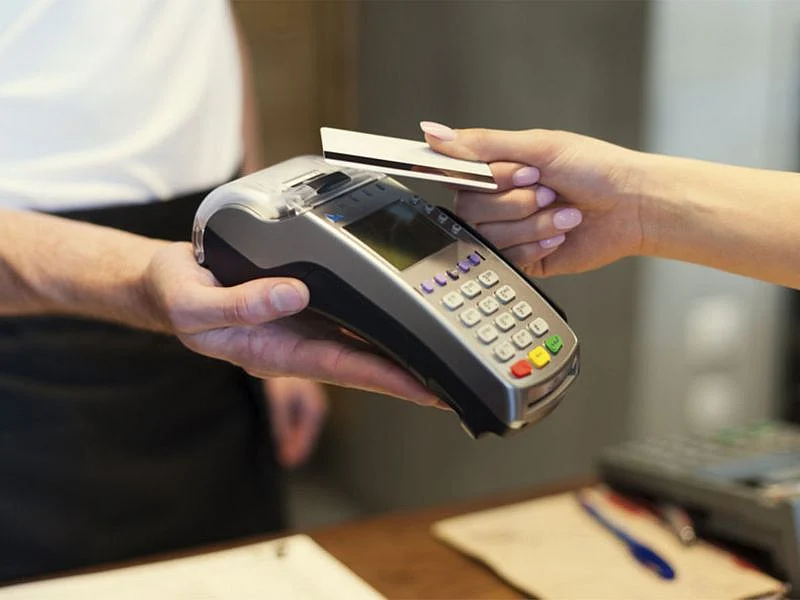Tap to pay: The truth about near-field communication (NFC) security
NFC payments are quick, convenient — just tap and go — but is your data (and face) secure?

Near Field Communication (NFC) payments are everywhere — tap your phone or card, and you’re done.
No cash? No problem. Things like Apple Pay, Google Pay, Samsung Pay and contactless credit/debit cards make payments a breeze.
But how safe is this tech that feels like sci-fi in your wallet?
The good news: NFC is generally safe.
The better news? It’s growing like crazy.
Here’s one evidence of its utility: UAE has hit 88% adoption —one of the highest globally, as per Migrant Money.
Contactless payment tech powered by NFC, exploded in popularity after mobile wallets like Google Pay and Apple Pay launched in the 2010s.
By 2025, an estimated 1.9 billion phones are NFC-enabled.
Why NFC is considered secure
NFC payments are built for security from the ground up. In most environments, NFC payments are fast, convenient, and secure.
Just how fast in NFC?
Researchers Wen-Way Yu and Chin-Yi Fang of the National Taiwan Normal University, writing for Sustainability journal (published in 2023 by the Multidisciplinary Digital Publishing Institute, MDPI), pointed out that the environment using NFC mobile payment is 15 to 30 seconds faster than usual card swiping.
Multiply that by 1 million transactions per day, then 360 per year, and you get the idea in terms of time savings.
They rely on the following:
Short range: Devices must be within a few centimeteres — meaning a hacker needs to be really close.
Encryption and tokenisation: No actual card data is shared; it’s converted into tokens.
Biometric/PIN locks: Your face or fingerprint often stands between your money and a thief.
Secure hardware: Many phones use a “secure element” chip, acting like a vault for transaction data.
Compared to old-school magnetic stripe cards, NFC is basically Fort Knox.
The UAE is a leader in NFC usage and safety. UAE banks enforce multi-layered protection, real-time fraud alerts, and strong compliance — keeping fraud incidents low despite huge transaction volumes.
In general, businesses and banks have a role to play: encryption, tokenisation, fraud monitoring.
Important point: Compliance with Payment Card Industry Data Security Standard (PCI-DSS) is a must.
Examples of NFC payment in real-world use:
Apple Pay
Google Pay
Samsung Pay
Contactless Credit/Debit Cards
Wearables (i.e. Apple Watch, Wear OS watches) that support NFC payments
Retail Stores & Restaurants
Public Transit/Ticketing
India-Specific Apps (i.e. Paytm, PhonePe, BHIM, and HDFC PayZapp).
Other scenarios: NFC is widely used at business events, healthcare payments, fitness/gym checkouts, and quick table/food truck payments.
The big numbers: NFC's global boom
This isn’t just niche tech. NFC is now a multibillion-dollar industry:
$15 billion global NFC volume in 2023 → $18 billion forecast for 2024
$6.25 trillion in all contactless payments (including NFC) expected in 2024 — up 25% from last year
Asia-Pacific leads with 40% of all NFC transactions
UAE boasts 88% adoption — one of the highest globally
US handled $750 billion via NFC in 2023
Europe hit €1.2 trillion in NFC transaction value
It’s fast, global, and only getting bigger. A
Word of caution: Just stay alert, lock your phone, and avoid shady apps — and you can tap in peace.
As adoption grew, so did cybercrime.
The flip side: What can go wrong?
It turns out even the best tech has vulnerabilities.
The catch? Like any tech, it has its soft spots — and scammers are getting smarter.
Early research into NFC vulnerabilities, like the 2020 “NFCgate” project from Germany’s Technical University of Darmstadt, showed how NFC data could be intercepted or manipulated.
Criminals quickly adapted this knowledge.
Malware like NGate relayed card data from victims’ phones to attackers at ATMs.
Moreover, the “Ghost Tap” technique allowed fraudsters to use stolen card data on fake POS terminals — making purchases that bypassed merchant processors entirely.
In October 2024, US agencies warned about “Track2NFC,” a threat exploiting offline payment modes.
Dark designs from the 'Dark Web'
At the same time, “Dark Web” forums began promoting NFC carding tools and tutorials, with cybercriminals using apps like Mycard and Airpay or developing custom ones for as little as $1,000.
This hidden part of the internet that is not accessible through standard web browsers or search engines like Google or Bing.
It requires special software — most commonly the Tor browser — to access.
Some attackers now operate entire “NFC farms” — arrays of mobile devices automating fake taps — to commit fraud at scale, Resecurity reported.
As NFC tech becomes more common, so do increasingly sophisticated schemes targeting it.
Here’s where NFC can get sketchy:
Eavesdropping: Theoretically possible, but rare due to the short range.
Relay attacks: Two connected devices trick a terminal into approving a faraway transaction.
Skimming/cloning: Modified terminals or scammy apps can grab card data.
Lost/stolen devices: If you don’t lock your phone, NFC becomes your wallet’s weak spot.
Fake verification apps: Some ask users to “authorise” by scanning their card — then steal the data.
Think of it like a locked door — it’s secure, but don’t leave it wide open.
How to stay safe while tapping
Smart users follow smart habits:
Lock your phone with a PIN, fingerprint, or face scan.
Turn off NFC when not using it—most attacks need it enabled.
Download apps only from trusted sources.
Use transaction alerts and spending limits.
Never scan your card just because someone asked you to—especially online or over the phone.
Sign up for the Daily Briefing
Get the latest news and updates straight to your inbox
Network Links
GN StoreDownload our app
© Al Nisr Publishing LLC 2025. All rights reserved.